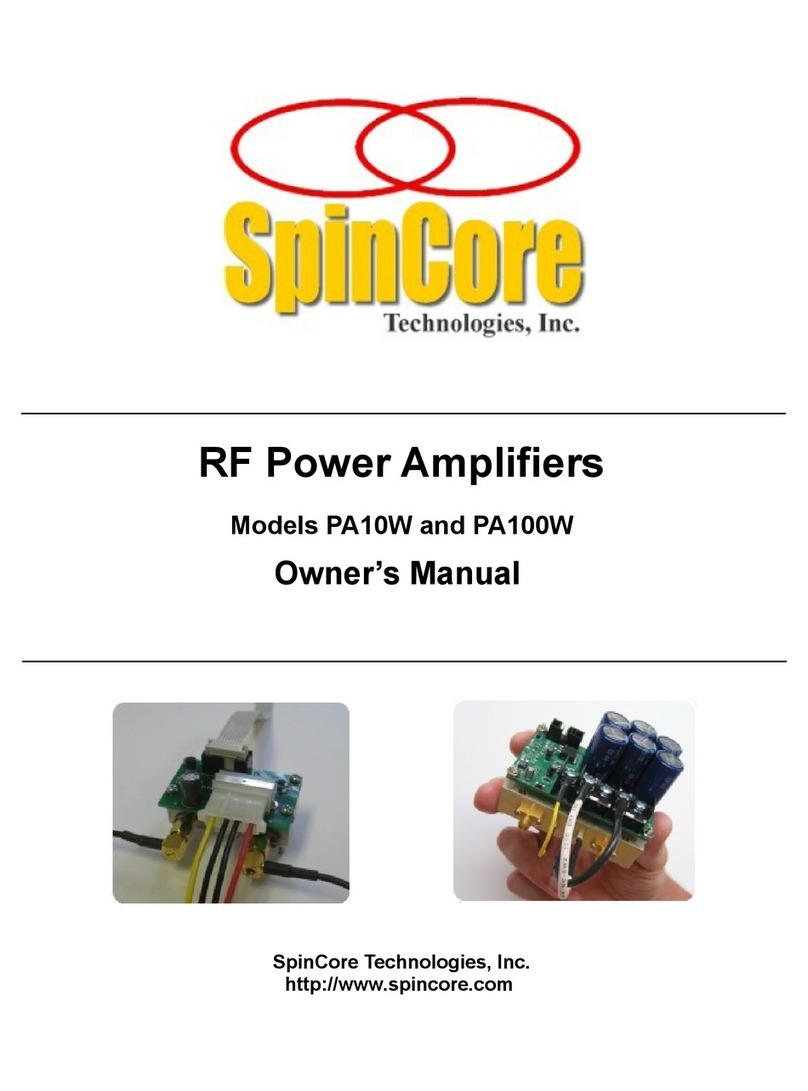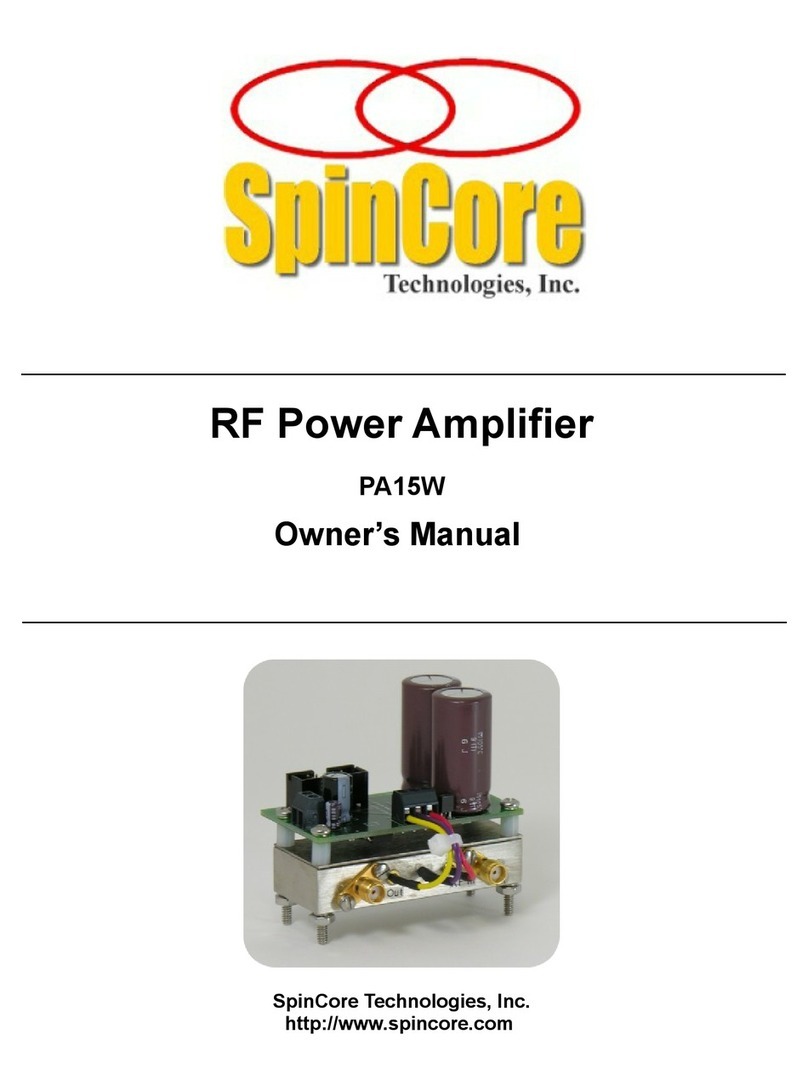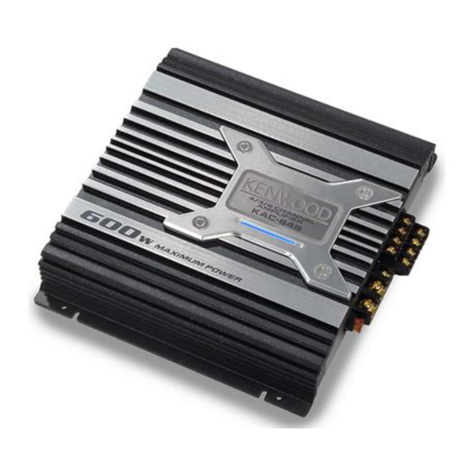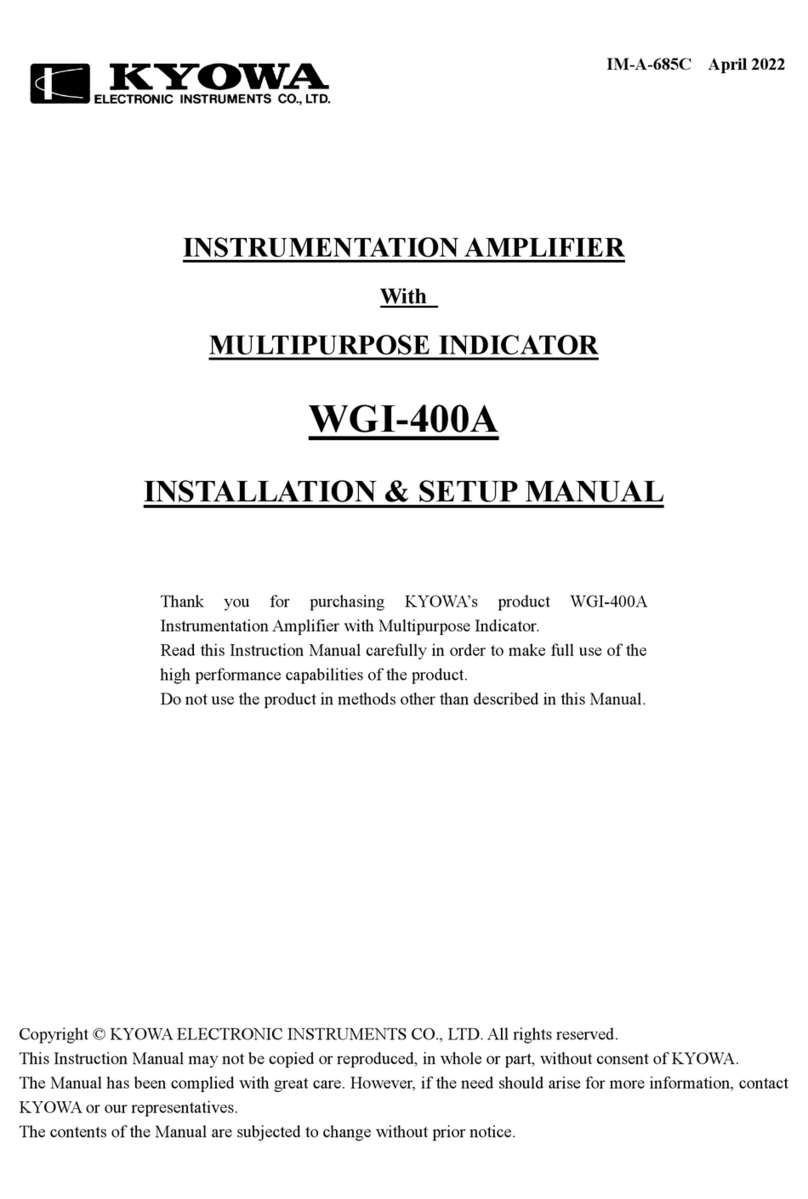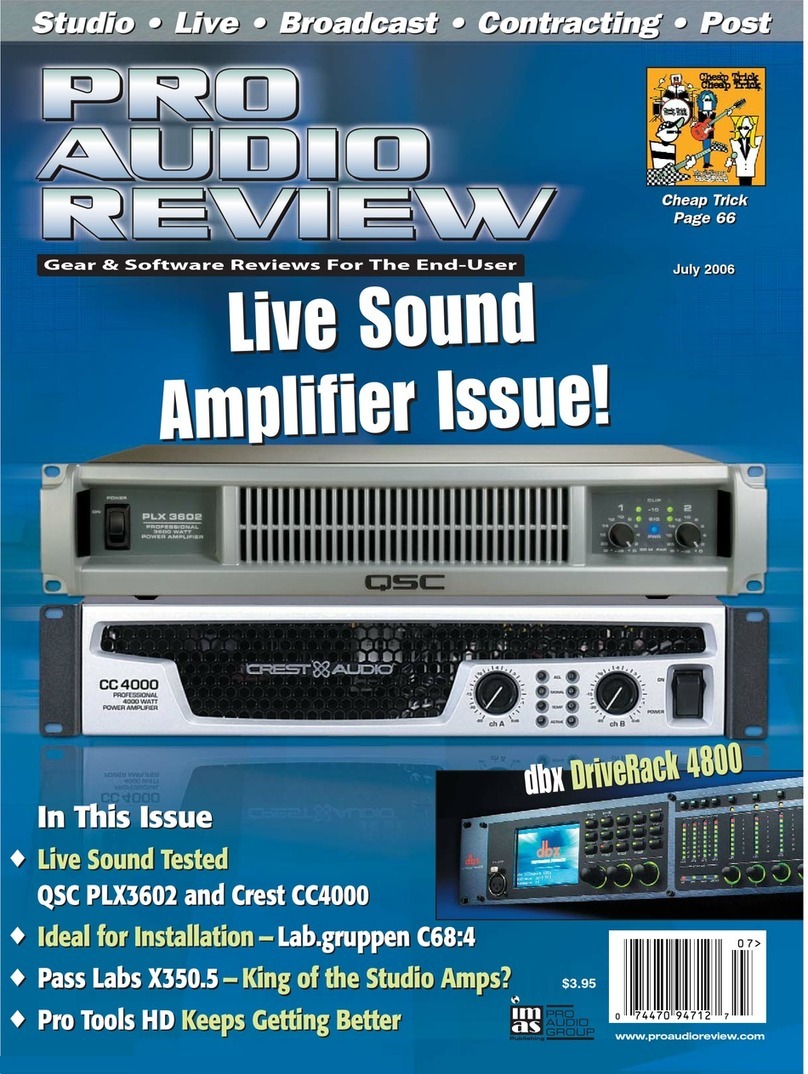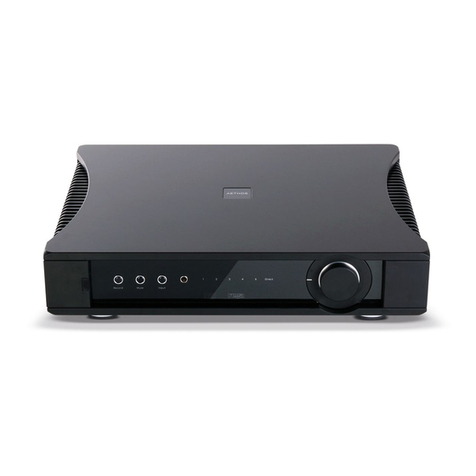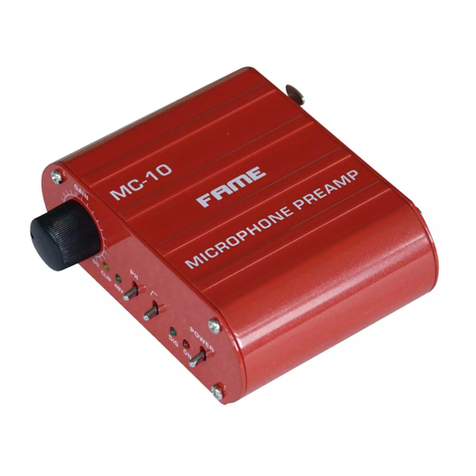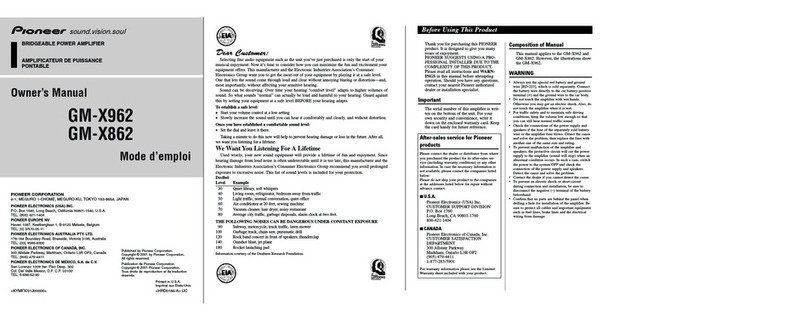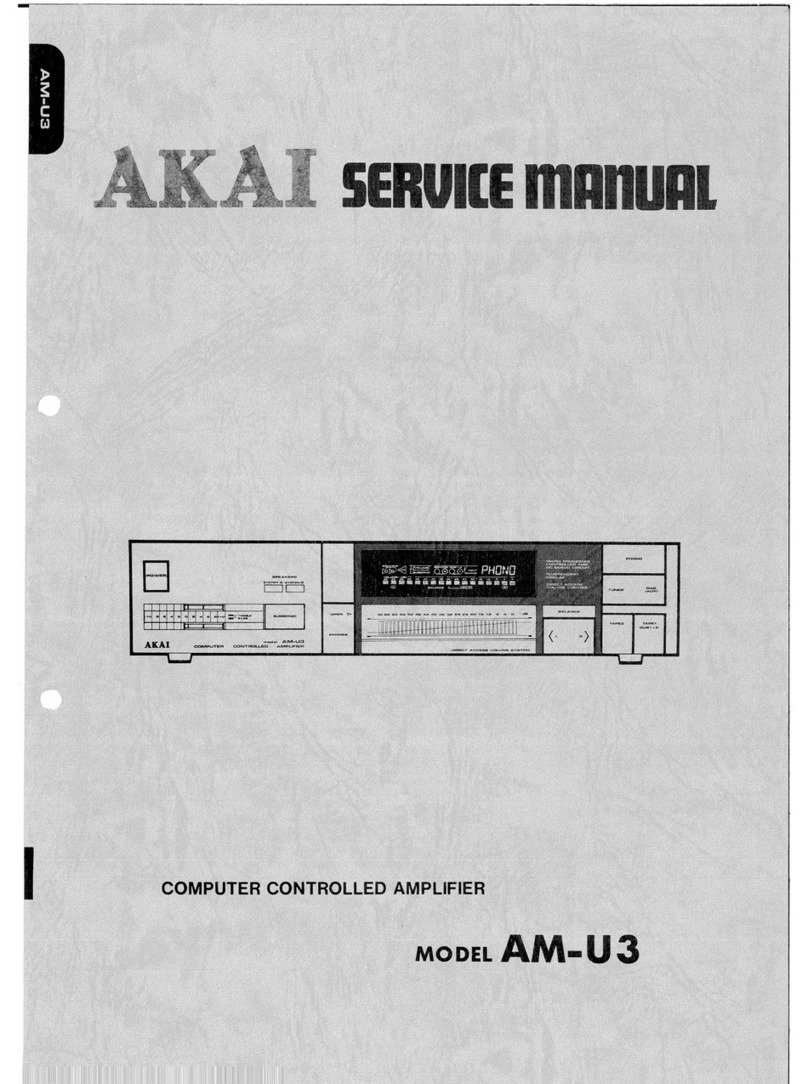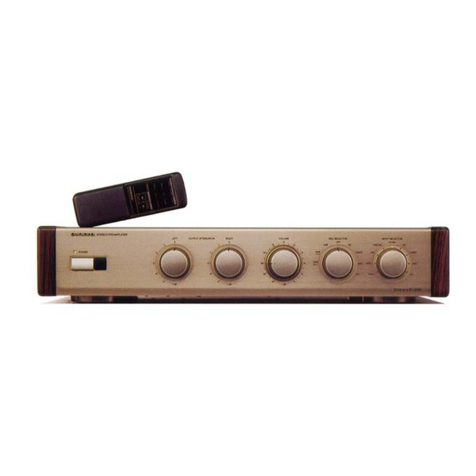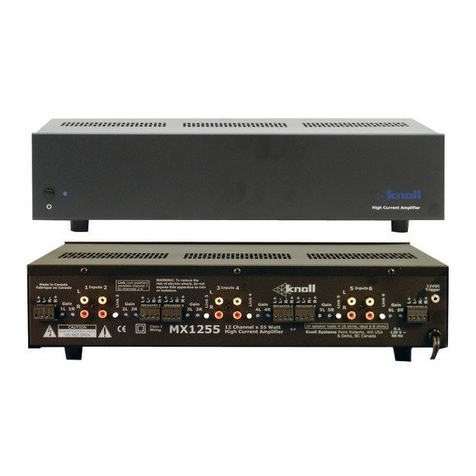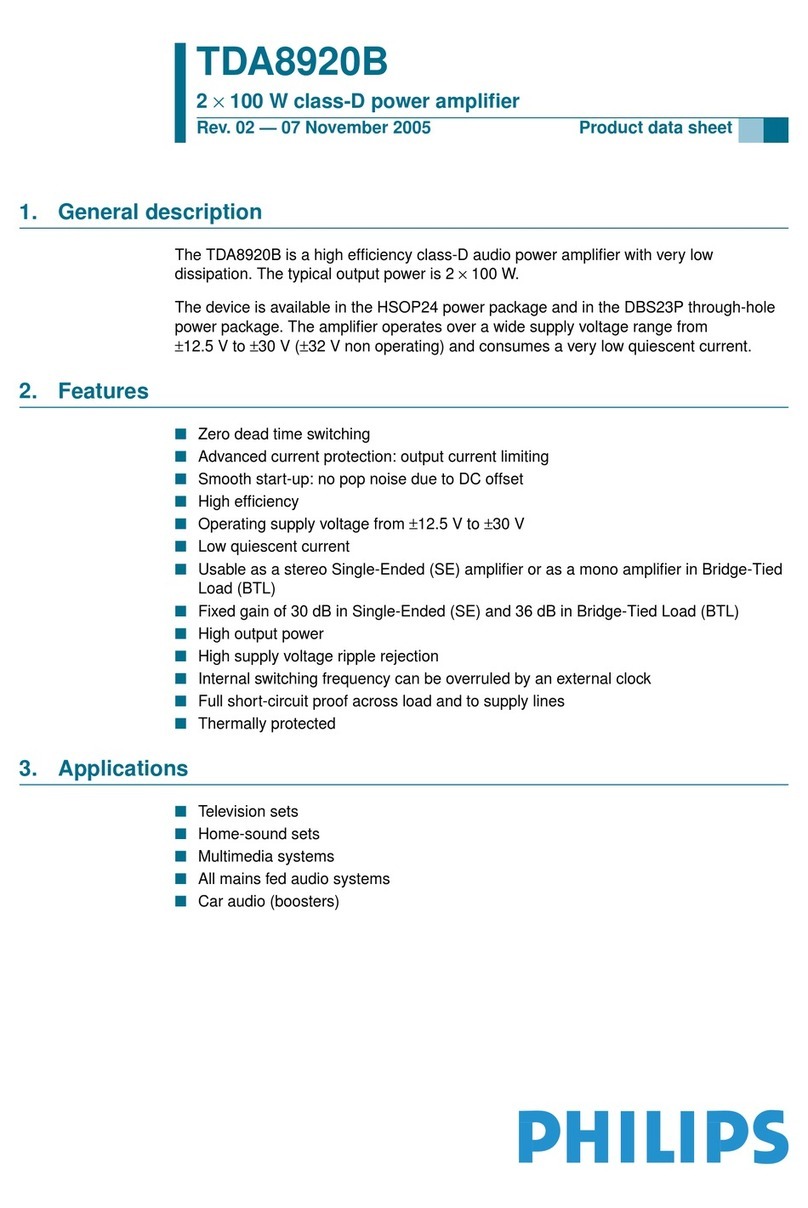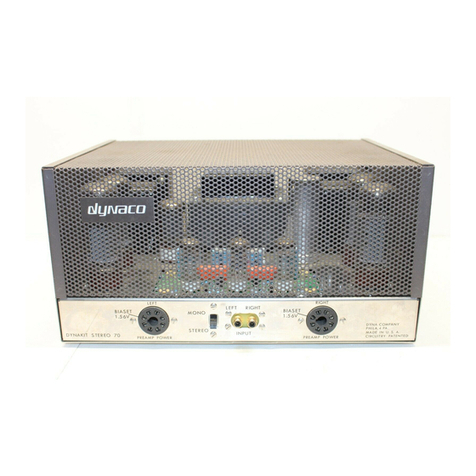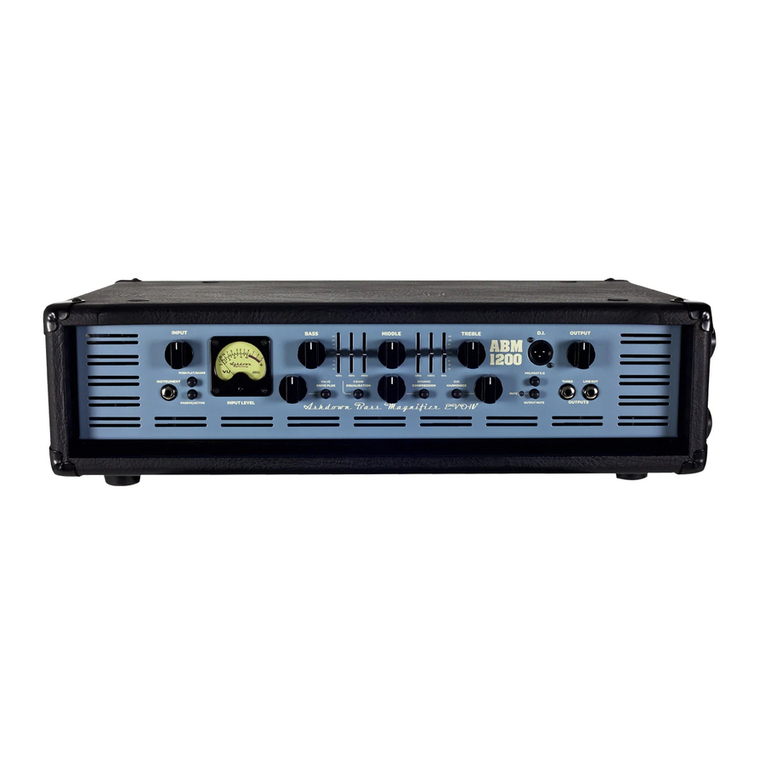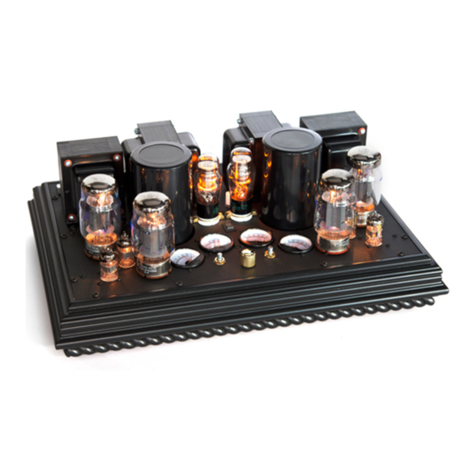SpinCore Technologies PA100W User manual

PA100W
RF Power Amplifier
Owner’s Manual
SpinCore Technologies, nc.
http://www.spincore.com

PA100W RF Power Amplifier
Congratulations and thank you for choosing a design from
SpinCore Technologies, nc.
We appreciate your business!
At SpinCore we try to fully support the needs of our customers. f you
are in need of assistance, please contact us and we will strive to provide
the necessary support.
© 2011 SpinCore Technologies, Inc. All rights reserved.
SpinCore Technologies, Inc. reserves the right to make changes to the product(s or information herein without notice. RadioProcessor™,
PulseBlaster™, SpinCore, and the SpinCore Technologies, Inc. logos are trademarks of SpinCore Technologies, Inc. All other trademarks
are the property of their respective owners.
SpinCore Technologies, Inc. makes every effort to verify the correct operation of the equipment. This equipment version is not intended
for use in a system in which the failure of a SpinCore device will threaten the safety of equipment or person(s .
http://www.spincore.com 2 2012-09-21

PA100W RF Power Amplifier
Table of Contents
. Precautions ................................................................................................... 4
Connecting & Disconnecting Power Amplifiers..............................................4
Power Considerations.....................................................................................4
. PA100W – 100 W Power Amplifier Module ............................................... 5
1. Overview ...................................................................................................................... 5
2. Specifications .............................................................................................................. 5
DC Electrical Specifications.......................................................................................5
RF Specifications.......................................................................................................6
3. PA100W RF Module with De-blanking Circuitry ...................................................... 6
RF Inp t and O tp t Connectors...............................................................................7
TTL Control Inp t Connector ...................................................................................8
DC Power Inp t Connector ....................................................................................10
4. PA100W RF Module Enclosure Options ................................................................. 10
1) PA100W mod le enclosed in a single bay enclos re with an integrated +24 V
power s pply – Fig re 7...........................................................................................11
2) PA100W mod le enclosed in a d al bay enclos re with an integrated +24 V
power s pply – Fig re 8...........................................................................................11
3) PA100W mod le f lly enclosed in a rack-mo nt enclos re................................13
5. Typical Set-Up For NMR Experiments .................................................................... 14
. Related Products and Accessories ........................................................ 15
V. Contact nformation ................................................................................. 15
V. Document nformation .............................................................................. 15
http://www.spincore.com 3 2012-09-21

PA100W RF Power Amplifier
. Precautions
Working with RF power amplifiers can be dangerous and even fatal if not handled properly.
Output voltages can reach values greater than 200 V peak-to-peak and can be fatal. Follow these
steps to avoid damaging the amplifier or inflicting serious injuries.
Connecting & Disconnecting Power Amplifiers
When connecting the power amplifier, follow these steps to avoid damaging the amplifier or
inflicting serious injuries.
1. Apply the load to the amplifier (make sure a load is ALWAYS present when working with
power amplifiers .
2. Apply the DC power to the amplifier.
3. Apply the RF input to the amplifier.
Repeat the steps in reverse order when disconnecting the amplifier.
Power Considerations
Make sure the following considerations have been made before applying power to the amplifier.
1. Be sure your load can appropriately dissipate the maximum power being applied by the
amplifier.
2. When applying an RF signal, work with low duty cycles to limit the power being dissipated.
The duty cycle ratio should be below 1% for safe operation.
http://www.spincore.com 4 2012-09-21

PA100W RF Power Amplifier
. PA100W – 100 W Power Amplifier Module
1. Overview
The PA100W RF power amplifier comes in a very compact broadband module delivering
100 Watts RMS (200 Watts PEP, Peak Envelope Power into a 50-ohm load. It has a frequency
range of 10 MHz to 100 MHz and is powered by a DC +24 to +28 V power supply (with the negative
terminal grounded . The PA100W has standard female SMA jacks for RF input and output, and a
screw terminal block for the DC power input. The PA100W typically operates in Class AB. The rise
and fall time of the RF pulse output is approximately 200 ns.
The product comes with blanking circuitry – the blanking circuitry keeps the PA100W blanked
(turned off until a TTL input (logical high is applied. The blanking circuitry helps to conserve
power, keeps the amplifier cool under typical operating conditions, and provides noise reduction
during the reception of NMR signals. To enable (deblank the power amplifier, a TTL pulse (logical
high needs to be applied to the control circuitry.
The PA100W power amplifier module measures 3.15" x 2.54" x 2.33" (80 x 65 x 59 mm . It can
be delivered as a module (with the blanking circuitry or in various enclosures - see the
“Configuration Options” section later in this document for more information.
http://www.spincore.com 5 2012-09-21

PA100W RF Power Amplifier
2. Specifications
DC Electrical Specifications
Table 1: Electrical specifications for the PA100W RF power amplifier.
Parameter Specification Units
Max DC Input Voltage 28 V (DC
Max RF input power 2.3 W
Max. continuous RF output power* 100 W (RMS
TTL De-blanking Voltage 3.3 V
*NOTE: Operating at this power level requires an adequate heat dissipation and an
appropriate rated power supply.
RF Specifications
Table 2: Input power necessary to achieve 100 Watts output power at a given frequency when the power amplifier is
supplied by a 28 V DC source.
Frequency nput Power (Watts RMS)
10 MHz 0.64
20 MHz 0.86
30 MHz 1.02
40 MHz 1.08
50 MHz 1.02
60 MHz 1.02
70 MHz 0.98
80 MHz 1.12
90 MHz 0.90
100 MHz 1.56
Table 2 shows data for the PA100W when supplied by +28 V. The PA100W is capable of
outputs greater than 100 W - however, it is important not to exceed the input power parameters for
the specific operating frequency (Table 2 to avoid damaging the module. Also note that if the
power amplifier is supplied by a +24 V DC source the gain is reduced and a maximum value of
approximately 150 W PEP can be achieved.
http://www.spincore.com 6 2012-09-21

PA100W RF Power Amplifier
3. PA100W RF Module with De-blanking Circuitry
This configuration does not have any enclosure for the PA100W RF module. It includes the de-
blanking circuitry mounted on top of the power amplifier to enable it when a TTL pulse is applied to
the control input pin. The module with no enclosure is shown below in Figure 1.
Figure 1: PA100W RF power amplifier module no
enclosure.
RF Input and utput Connectors
When connecting the PA100W RF power amplifier module, the RF signal source should be
connected to the SMA jack on the left hand side (top view of the circuit (RF in . The SMA jack on
the right hand side (top view is the RF output from the power amplifier (RF out . See Figure 2, on
the next page, for details.
http://www.spincore.com 7 2012-09-21

PA100W RF Power Amplifier
Figure 2: Top view of the PA100W power amplifier module depicting
connectors. RF in and RF out are SMA jack connectors, Input TTL is an
IDC connector and the input DC power connector is a screw terminal
block.
TTL Control Input Connector
The PA100W power amplifier module has a 10-pin shrouded male IDC connector, pin diagram
shown in Figure 3, which supplies the input TTL control signal. The control signal is pin 8 on the IDC
header and the corresponding ground is pin 7. The input is terminated by a 100-ohm load and
requires an external source capable of outputting at least 10 mA. The TTL requirements for the
deblanking control input are standard low voltage TTL values of 3.3V for a logical high, 0V for
logical low. A logical high signal is required to deblank (enable the PA100W. In testing, the TTL
deblanking pulse is typically applied 300 us prior to the application of the RF pulse. The end of the
deblanking signal coincides with the end of the RF pulse. See Figure 3 below for details.
Figure 3: 10-pin IDC connector (Digi-Key part A33159-
ND). Mates with Digi-Key part HKC10H-ND or similar.
http://www.spincore.com 8 2012-09-21

PA100W RF Power Amplifier
The timing diagram of a typical application of PA100W with the deblanking pulse applied prior to
the RF pulse is presented in Figure 4, below. The top trace is the deblanking signal, the trace
below represents the input signal, and the bottom trace is the RF output. In the lower panel, an
expanded view of the RF output pulse is depicted. At lower operating frequencies the output will be
progressively less sinusoidal. At these frequencies a filter will have to be used to obtain a sinusoidal
output. When working with short RF pulses, on the order of 1 us or so, triggering the oscilloscope
on the falling edge of the deblanking pulse will help with identifying and capturing the RF pulse on
the scope.
Figure 4: Representation of the deblanking and RF input and output signals to the PA100W.
http://www.spincore.com 9 2012-09-21
Deblanking
Signal
RF Output
Deblanking Delay Pulse Time
RF Input

PA100W RF Power Amplifier
DC Power Input Connector
The PA100W RF power amplifier module has a 5-pin screw-terminal input power connector. The
pin arrangements for this connector are shown below in Figure 5 (top view .
Figure 5: Top view of the 5-position power input
connector (Molex part 38720-6305).
4. PA100W RF Module Enclosure Options
The PA100W RF power amplifier can be delivered in various enclosures which protect the RF
power amplifier module and include an AC/DC power supply and internal RF cables. Configurations
“1” and “2” below have power inputs of 90V-264V AC. All enclosures have the RF input/output
signals provided on external BNC connectors. The TTL inputs are routed through female DB-9 input
connectors., see Figure 6 below for the pinout. The active TTL signal needs to be connected to pin
4, with the corresponding ground line connected to pin 8. Available enclosure configurations are
listed on the next page.
http://www.spincore.com 10 2012-09-21
Figure 6: DB-9 Female Connector Pinout

PA100W RF Power Amplifier
1) PA100W module enclosed in a single bay enclosure with an integrated +24 V
power supply – Figure 7
Single bay enclosure additional specifications include:
•Excellent EMI/RFI shielding that meets FCC & CE regulations.
•Built-in 4 x 4 cm quiet cooling fan.
•High quality 50 Watt AC input switching power supply.
• Dimensions are approximately 10.25” x 7.75” x 2.25” (26 x 19.5 x 6 cm .
NOTE: Since +24 V is used inside of the enclosure, both the output level and the
maximum duty cycle are reduced
2) PA100W module enclosed in a dual bay enclosure with an integrated +24 V power
supply – Figure 8
Dual bay enclosure additional specifications include:
•Metal body to provide effective heat dissipation with streamlined plastic front panel.
•Built-in quiet 8x8 cm cooling fan.
•80W universal AC switching power supply.
NOTE: Since +24 V is used inside of the enclosure, both the output level and the
maximum duty cycle are reduced
http://www.spincore.com 11 2012-09-21
Figure 7: PA100W RF power amplifier single bay enclosure.

PA100W RF Power Amplifier
Figure 8: PA100W RF power amplifier - enclosed in dual bay
enclosure
Back Panel Connections (Figure 9 :
• AC (C14 socket for power.
• RF In – BNC input signal connection to amplifier (not to exceed 1W .
• RF Out – BNC output signal connection to load.
• TTL In – DB9 connector used for de-blanking.
◦Pin 4 (of the female DB9 connector – Connected to de-blanking signal
◦Pin 8 (of the female DB9 connector – Connected to Ground
http://www.spincore.com 12 2012-09-21
Figure 9: PA100W RF power amplifier back panel
connections

PA100W RF Power Amplifier
3) PA100W module fully enclosed in a rack-mount enclosure
(Available upon request, please contact SpinCore directly for your custom quote)
Rack-mount enclosure additional specifications include:
- Industrial steel 4U rack-mount enclosure.
- High quality quiet +24 V switching power supply.
- Built-in 12 x 12 cm quiet cooling fan.
- Dimensions are approximately 17.7” x 17.3” x 7” (45 x 44 x 18 cm
http://www.spincore.com 13 2012-09-21
Figure 10: PA100W RF power amplifier rack-mount
enclosure with integrated power supply

PA100W RF Power Amplifier
5. Typical Set-Up For NMR Experiments
Figure 11 below shows a typical connection diagram in which the PA100W is used with
SpinCore's iSpin-NMR system to run NMR experiments. Note: It is not necessary to use iSpin-NMR
with the PA100W.
http://www.spincore.com 14 2012-09-21
Figure 11: A typical NMR setup with iSpin-NMR, and PA100W with enclosure. Note: It is not necessary to use
iSpin-NMR with the PA100W.

PA100W RF Power Amplifier
. Related Products and Accessories
1. Power amplifiers with alternative power levels are also available in 10 Watts, 15 Watts,
and 75 Watts. For more information, please visit http://www.spincore.com/products/RFPA/
2. iSpin-NMR, The Complete, Simple, Intuitive, Effective and Portable NMR System. For
more information, please visit http://spincore.com/products/iSpinNMR/
3. SpinCore RadioProcessor: A complete single-card solution for RF pulse generation and
acquisition, the. For more information, please visit
http://www.spincore.com/products/RadioProcessor/
4. If you require a custom power level, please inquire with SpinCore Technologies through
our contact form, which is available at http://www.spincore.com/contact.shtml
V. Contact nformation
SpinCore Technologies, nc.
4631 NW 53rd Avenue, SU TE 103
Gainesville, FL 32653
USA
Telephone (USA): 352-271-7383
Fax (USA): 352-371-8679
Website: http://www.spincore.com
Web Contact Form: http://www.spincore.com/contact.shtml
V. Document nformation
Please contact SpinCore for revision history.
http://www.spincore.com 15 2012-09-21
Table of contents
Other SpinCore Technologies Amplifier manuals
